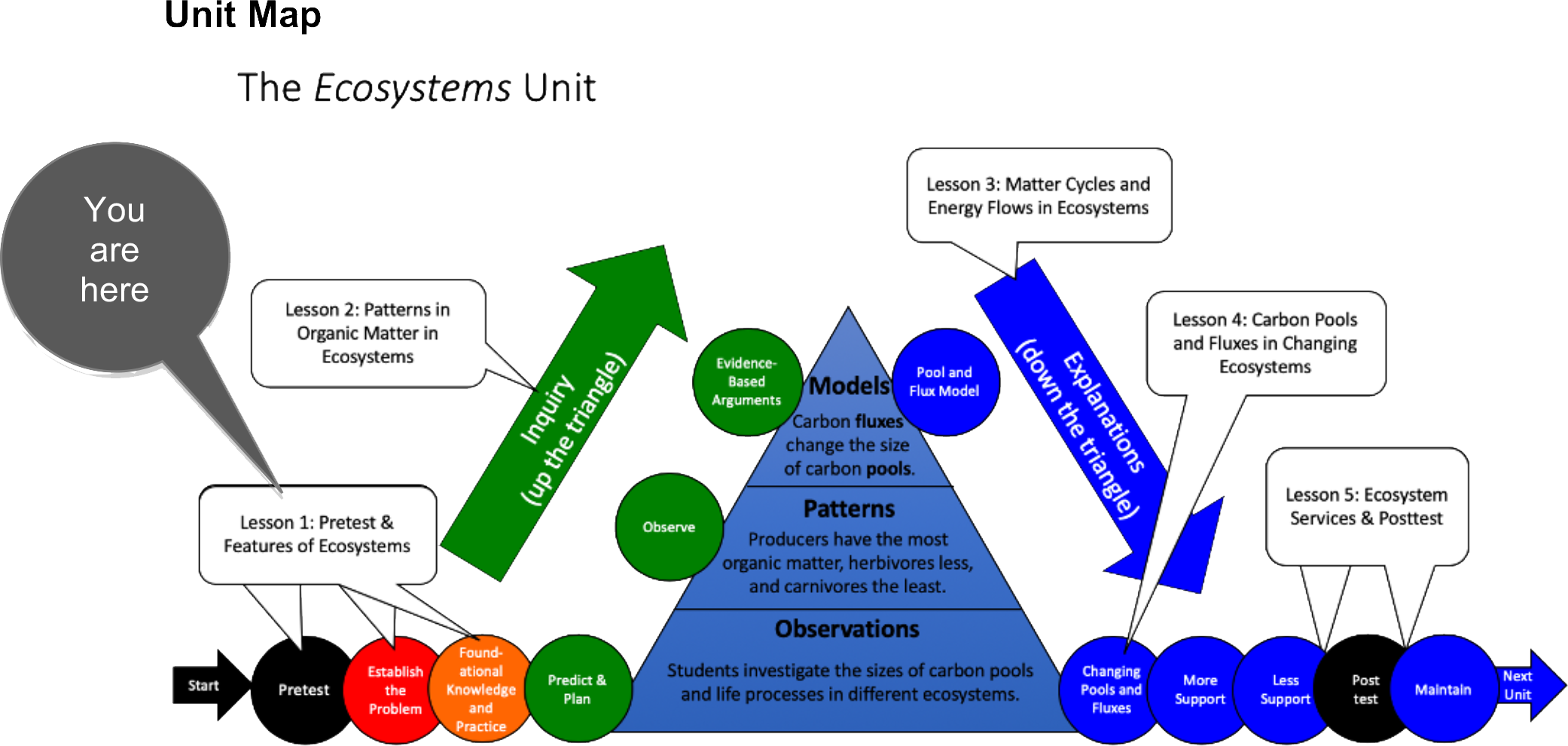Transformations in Matter and Energy Carbon TIME is an NSF-funded partnership led by Michigan State University
Ecosystems | Lesson 1 - Unit Pretest and Key Features of Ecosystems
Overview
Students take the pretest, share their ideas about where carbon is located in ecosystems, identify which carbon is organic versus inorganic, and identify the type of organisms (producers, herbivores, carnivores, and decomposers) that exist in ecosystems.
Guiding Question
How many foxes can live in a meadow?
Activities in this Lesson
- Activity 1.1: Ecosystems Unit Pretest (20 min)
- Activity 1.2: Expressing Ideas and Questions for Patterns in Ecosystems (40 min)
- Activity 1.3: Carbon Pools (30 min)
Unit Map

Target Student Performance
|
Activity |
Target Performance |
|
Lesson 1 – Pretest and Features of Ecosystems (students as questioners) |
|
|---|---|
|
Activity 1.1: Ecosystems Unit Pretest |
Students show their initial proficiencies for the overall unit goal: Questioning, investigating, and explaining how carbon cycles and energy flows in ecosystems. |
|
Activity 1.2: Expressing Ideas and Questions for Patterns in Ecosystems |
Students ask and record specific questions about changes in matter and energy in response to the unit driving question: How many foxes can live in a meadow? |
|
Activity 1.3: Carbon Pools |
Students identify where carbon atoms are located in ecosystems and groups of organisms that have similar functions (carbon pools). |
NGSS Performance Expectations
This lesson helps students start thinking about all of the NGSS performance expectations for this unit but does not focus on their mastery on of any of them.

 Download PDF of Lesson 1 Teacher's Guide
Download PDF of Lesson 1 Teacher's Guide